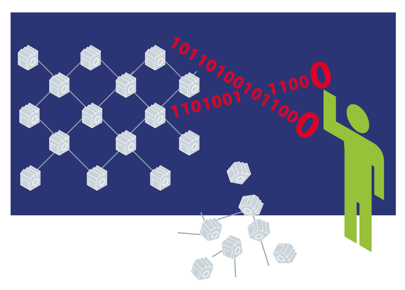Finding the Right Technology for Your Supply Chain
Brian Hoey - February 13, 2018

 Plenty has been written on the right way to choose the supply chain management technology that best fits your company’s needs, much of it focusing on broad organizational points like defining specific needs and long term business goals. Coming into the IT procurement process with intra-operational buy-in and a well-founded idea of how new technology should integrate into your workflows and key performance indicators (KPIs) is, of course, crucial to finding the right solution, but that’s not the end of the discussion. Once you’ve assessed your specific needs and your short- and long-term goals, how do you evaluate the technology itself?
Plenty has been written on the right way to choose the supply chain management technology that best fits your company’s needs, much of it focusing on broad organizational points like defining specific needs and long term business goals. Coming into the IT procurement process with intra-operational buy-in and a well-founded idea of how new technology should integrate into your workflows and key performance indicators (KPIs) is, of course, crucial to finding the right solution, but that’s not the end of the discussion. Once you’ve assessed your specific needs and your short- and long-term goals, how do you evaluate the technology itself?
Visibility
One of the most crucial questions that manufacturers need to ask themselves when evaluating a particular supply chain management solution is, “how will this help improve visibility across the organization?” End-to-end (E2E) visibility is becoming an increasingly meaningful goal in the world of Industry 4.0, as it helps to promote agility and flexibility within a more legible, integrated supply chain. If a given vendor’s solution doesn’t help to alleviate planning siloes with easy-to-use modules for accessing information across all relevant touch points on the value chain, then its value proposition will be a dubious one at best. Consider whether your proposed solution offers real-time integration, in-memory storage, and an easy-to-use interface. Features like these can help to give would-be users a sense of the visibility implications both within their organizations and across global value chains.
Integration with Existing IT and Production Processes
In automotive manufacturing in particular, where lead times are often longer and production workflows more involved, the precise nature of your production processes will determine the exact needs that any proposed software solution ought to meet. For instance, if your production planning involves scheduling the use of resources in a job shop, you ought to ensure that whatever new IT you adopt is designed to handle the scheduling complexity that a job shop implies. Even better, strive for software that can help you refine existing processes, whether through advanced analytics or simply increased digitization.
More broadly, businesses need to think about how easily a new piece of software can fit into their existing IT infrastructure. With a Postmodern ERP mindset, it should be possible to find interoperable solutions that connect with one another in a way that improves workflows, rather than causing disconnect among disparate business functions. For instance, if a given manufacturer has identified a need for improved transport logistics, it may be useful to find transport planning software that can easily send and receive information from any existing inventory tracking software in order to optimize just-in-time deliveries and full truck loads.
Collaboration
In addition to investigating the visibility-added potential for new IT solutions, companies might consider a related question: how will the software under consideration facilitate collaboration within the organization? It’s crucial for supply chain management technology to help eliminate siloes, but it can be almost equally crucial that it have the ability to bridge the gaps between, for instance, different levels of corporate planning, from strategic down to operational and tactical. Naturally, transparency itself plays a major role in promoting collaboration, but it’s worth investigating whether a proposed solution has specific functionality in place to help connect different processes across the value stream.
For example, a particular technology might support sales & operations execution (S&OE) by offering insight into real-time fluctuations in demand and the supply stream. In this way, it can empower S&OE planners to bridge the gap between high level planning and day-to-day factory floor operations. By the same token, a solution equipped with advanced analytics might offer improved forecasts, thereby helping teams across the organization to share a cohesive vision of the company’s upcoming goals and challenges. Though not often thought of as being especially helpful for collaboration, advanced analytics can help add a sense of cohesion to a company’s mission by keeping everyone across all business functions on the same page.
Reliability
Most supply chain technology providers will go out of their way to highlight the features that have been alluded to above, and the choice of what features are being highlighted can actually go a long way towards helping manufacturers to determine how well a given solution’s strengths and priorities align with their own. Once the features have been assessed in terms of your specific KPIs, however, it’s important to take some time to research the things that many technology vendors won’t highlight: the reliability of the provider and their service. Especially if you’re considering cloud-based or software-as-a-service (SaaS) solutions, it can be enlightening to do outside research into things like server maintenance downtime and bandwidth requirements. More generally, it can be useful to hear from users of a particular software about how their technology did and didn't meet their expectations: Was the interface intuitive to use? How complex was the integration process? Did the vendor assist with any necessary data migrations? With these questions and others, your company can narrow down the list of potential vendors and come one step closer to finding the perfect technology to make your existing operations even more competitive.
LATEST POSTS
- Understand Circular Economy in The Manufacturing Industry
- How Can Industry 4.0 IT Integration Be Achieved Smoothly?
- The Significance of Order Sequencing in Discrete Manufacturing
- How to improve your Supply Chain Management: The Power of Control Towers
- Optimizing Human Resource Scheduling in Manufacturing: A Technological Approach



